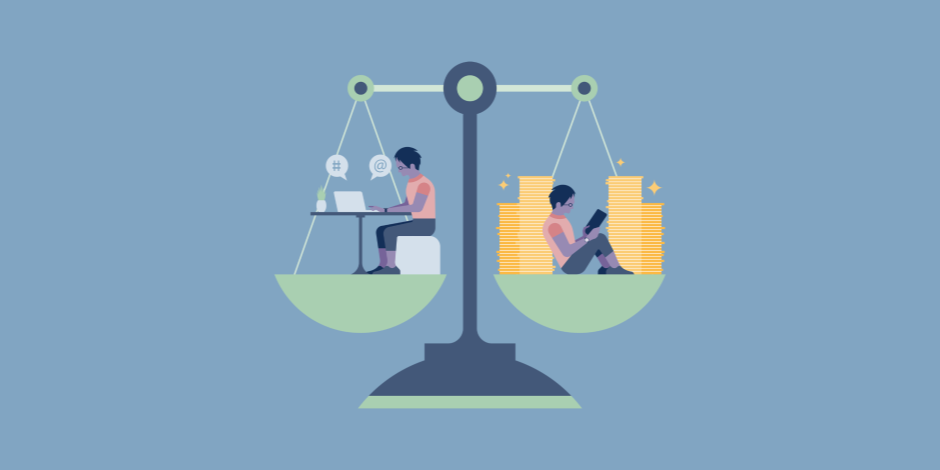About Advanced Java Training

The course builds a strong understanding of JDBC Technology. It gives in to demonstrate why Servlets are the cornerstone of Java’s Web platform. It then shows how JSP is built on the Servlet architecture. Additionally, the class shows students how to use JSTL, custom tags and expression language to reduce Java code in Web pages while adding tremendous power and capability to those pages. The class culminates in an exploration of Java MVC frameworks like Struts at a high level.
This is not a class that focuses on theory. Participants will find the course is loaded with practical labs and simulations. After taking this class, developers will be able to build Web applications that perform well, are scalable, and that are easier to maintain.
Advanced Java Training Course Prerequisite
Basic Knowledge of Core Java is required. An understanding of Web technologies like HTML and HTTP is helpful.
Advanced Java Training Course Objective
Learn the fundamentals of JDBC and using the different interfaces in the JDBC API. Learn how to use Java servlets in the role of Web application control. Identify the options to state management in a Java Web application and understand the pros/cons of each. Understand how JSPs can help to separate Web logic and functionality from page layout. Explore how to make JSPs smaller and more powerful with JSTL, custom tags and expression language. Explore strategies in the exchange of data between Web pages (views) and business processing (model). Learn the meaning and importance of MVC
Advanced Java Training Course Duration
60 Working days, daily one and half hour
Advanced Java Training Course Content Overview
Introduction
About Java Platforms
Applications of Java
About API (Application Programming Interface)
Static Blocks
Introduction to interfaces
Runtime Polymorphism
Persistence
What is Persistence?
File management system
Disadvantages of File management system
Database management system
Advantages of Database management system
JDBC
Introduction to JDBC
Why JDBC? & ODBC Vs JDBC
Approch-1 Vendor specific library
Disadvantages
Approch-2 X/Open standards
Disadvantages
Approch-3 ODBC standards
Disadvantages
Approch-4 JDBC standards
Advantages
JDBC API and JDBC Drivers
About JDBC API
What is a JDBC Driver?
JDBC architecture
Types of JDBC Drivers
JDBC-ODBC bridge driver
Advantages & Disadvantages
Native API Partly Java Driver
Advantages & Disadvantages
Net-Protocol all/pure java driver
Advantages & Disadvantages
Native-Protocol pure java driver
Advantages
JDBC API
JDBC Packages
sql, Javax.sql
Interfaces and classes in above packages
Versions of JDBC API
Steps for developing JDBC application
SQL
Introduction to SQL
Types of SQL queries
Establishing Connection to Database
About DriverManager class
Methods of DriverManager
What is registering driver with DriverManager
Different methods of registering driver with DriverManager
About getConnection method of DriverManager
Syntax of URL to communicate with database
Autoloading of class driver in JDBC 4.0
Example with Application
Statement interface
What is Statement? & Need of Statement
Characteristics of Statement
How to get Statement object?
Methods of Statement
Passing SQL statements to Database
About execute, executeUpdate, executeQuery, largeExecute Updates methods
Example with Application

Prepared Statement interface
What is PreparedStatement?
Need of PreparedStatement
Difference between Statement and PreparedStatement
How to get PreparedStaement object
Defining parameters
How to pass values to PerparedStatement object
What is SQL Injection attack & how to overcome
Example with Application
Resultset Interface
What is ResultSet?,
Need of ResultSet
How to get resultset object
Methods of ResultSet
Reading data, Various types of ResultSet
Resultset types
TYPE_SCROLL_SENSITIVE
TYPE_SCROLL_INSENSITIVE
TYPE_FORWARD_ONLY
Resultset modes
CONCUR_READ_ONLY, CONCUR_UPDATABLE
Example with Application
SQL 99 Datatypes
BLOB
Inserting blob type, Reading blob type
CLOB
Inserting clob type, Reading clob type
Array, Inserting array type
Reading array type
Object, Inserting object
Reading object
Example with Application
Metadata
Resultset Metadata
Need of ResultsetMetaData
How to get metadata
DatabaseMetadata
How to get database metadata
Parameterizedmetadata
How to get parameterizedmetadata
Example with Application
Callable Statement
About CallableStatement
Advantage of CallableStatement
Creating CallableStatement object
Calling Procedure using CallableStatement
Calling functions using Callable Statement
About PL/SQL Programming vs Manual on Batch Queries
Batch updates
What is batch processing
Batch updates using Statement object
Batch updates using PreparedStatement object
Transaction Management
Transaction Definition
ACID Properties
Atomicity, Consistency,Isolation, Durability
Methods in Transaction Management
setAutoCommit(), setSavePoint()
commit(), rollback()
Example with All Application
Connection Pooling
What is connection pooling?
Advantages of connection pooling
Disadvantage of DriverManager
About DataSource
JDBC connection pooling
Isolation Levels
Example with Application
RowSet
What is RowSet?
What is difference between ResultSet and RowSet
Types of RowSets
JdbcRowSet
CachedRowSet
WebRowSet
Example with Application
Communicating with difference databases
Communicating with MYSQL
Working with CSV files
Communicating with MS-EXCEL
Communicating with PostgreSql
Example with Application
JDBC 4.0 Features
Auto-loading of JDBC driver class
Connection management enhancements
Support for RowIdSQL type
DataSet implementation of SQL using Annotations
SQL exception handling enhancements
SQL XML support
Example with Application
Working With Properties File
Working With Date Values
Procedure To Create Desktop icon (jar file execution)
SERVLET

JEE
JEE technology
Components of JEE technology
What is Enterprises Application
What is Web Application
Types of Web Application
Presentation Oriented Web Application
Service Oriented Web Application
About Web Client, About WebServer
About ApplicationServer
Diff Between WebServer And Application Server
Introduction
Server side technologies
Need of server side technologies
Client side technologies
What is Servlet? & Advantages of Servlet
Difference between CGI and Servlet
Servlet API
Versions of Servlet API
Packages of Servlet API
About Servlet Container
Responsibilities of Servlet Container
HTTP Protocol
What is HTTP?
What is HTTP Request format & Response format
Developing Servlet
Servlet interface
Methods of Servlet interface
Developing servlet by implementing Servlet interface
Life cycle methods of Servlet
Webapplication directory structure
Deployment descriptor file (web.xml)
What is deployment?
Types of deployments
Deployment, Console deployment
Tool deployment
Deployment webapplication in tomcat server
URL patterns
Developing And Deploying Servlet Apps in Diff Servers Like
Tomcat Server
JBoss Server / WildFly
Weblogic Server
GlassFish
ServletRequest
Methods of ServletRequest
About request parameters
About request headers
ServletResponse
Methods of ServletResponse
MIME types
Generating response
ServletConfig
What is ServletConfig?
What is need of ServletConfig
Methods of ServletConfig
Different ways of getting ServletConfig object.
Defining config initial parameters in web.xml
GenericServlet
What is GenericServlet?
Methods of GenericServlet
About init(ServletConfig),init() method
Working with welcome-file
Configuring welcome-file in web.xml
Methods of loading Servlet
About load on start up
When client send first request
ServletContext
What is ServletContext?, Need of ServletContext
Methods of ServletContext
Different ways of getting ServletContext object
Context init parameters
Defining Context init parameters in web.xml
HttpServlet
What is HttpServlet?
Methods of HttpServlet
HTTP Request methods
About public service and protected service methods
About doXXX() methods
Difference between GenericServlet and HttpServlet
Diff Between doGet(-,-) and doPost(-,-) methods

HttpServletRequest
HttpServletRequest VS ServletRequest
How to read request parameters of HttpServletRequest
How to read request headers of HttpServletRequest
HttpServletResponse
HttpServletResponse VS ServletResponse
About HttpServletResponse methods
Response status codes
Html To Servlet Communication
Form Validations
Different Types of Form Components
Working With Multiple Hyperlinks
Working With Multiple Submit Buttons
War File Creation
Servlet To DataBase Software Communication
RequestDispatching
What is RequestDispatcher?
What is need of RequestDispatcher?
RequestDispatching methods
Include
Forward
Difference between include and forward methods
Getting RequestDispatcher
Using ServletRequest
UsingServletContext
Difference between getting RequestDispatcher using ServletRequest and ServletContext
What is Servlet Collaboration?
Redirecting
About sendRedirect method
Difference between sendRedirect and forward methods
setStatus, response.setHeader methods
Attributes
What is Attribute
Difference between parameter and attribute
Scope of Attributes
Request scope, Context scope
Session scope
Adding, removing and modifying attributes
Thread Saftey In Servlet Programming
State and Session Management
About connectionless protocol
About connection oriented protocol
Stateless protocol
What is state/session management
Need of session management
Session management methods
URL rewriting, Hidden form fields
Cookies, HttpSession
URL Rewriting
What is URL rewriting
URL rewriting techniques
Disadvantages of URL rewriting
Hidden form fields
What is hidden form fields
Disadvantages of hidden form fields
Cookies
What is Cookie,
How to create Cookie
Methods of Cookie
Types of Cookies
Non Persistent Cookie
Persistent Cookie
How to add cookie to response
How to read cookie from request
Deleting cookie from servlet
Properties of Cookie
Disadvantages of Cookies
HttpSession
What is HttpSession
Advantage of HttpSession
How to create HttpSession object
How to read HttpSession object from request
Invalidating HttpSession
Using invalidate method
Using session config in web.xml
By setting time
HttpSession attribute
Error Handling in Servlet
Configuring in web.xml
Programmatically
Filters
What is Filter?
Need of Filter & Lifecycle of Filter
Filter mapping in web.xml
About FilterConfig
Defining config parameters in web.xml
About FilterChain interface
Methods of FilterChain
What is Filter chaining?
Working with filter chaining
Listeners
What is Listener?
Usage of Listener
About Event Delegation Model Architecture
Types of Listeners
RequestListener
ServletContextListener
HttpSessionListener
Types of Attribute Listener
Request AttributeListener
HttpSessionAttributeListener
ServletContextAttributeListener
About Event classes

Authentication and Authorization(Security In Servlet Programming)
Understanding Authentication Mechanism
HTTP basic authentication
HTTP Digest authentication
HTTPS Client authentication
HTTP form based authentication
Working Connection Pooling
Connection pooling in difference servers
Tomcat, Weblogic, Glassfish
JBoss Server / WildFly
Developing servlet using serverside connection pooling
Working with domains
Creating domain in weblogic server
Deploying webapplication using console
Creating domain in glassfish server
Deploying webapplication using console
Working with Servlet 2.5/3.0/3.1 features
Async Servlet
File Uploading and Downloading
Non-blocking I/O
HTTP protocol upgrade mechanism
Different Types Of URL Patterns
Dynamic Registration Of Servlet (Developing Servlet Program Without web.xml)
Annotations in Servlet Programming
Introduction to Annotations
Types of Annotations
Annotations Vs web.xml
JSP
Introduction
What is JSP?
Advantages of JSP & Applications of JSP
Difference between JSP & Servlet
JSP Basics
JSP Life cycle, JSP Lifecycle methods
jspInit, _jspService
jspDestroy, Saving jsp file as a,
Public resource, Private resouse

JSP tags
JSP Tags
three categories of tags
scripting elements, directives
standard actions
Scripting Elements
What is scripting elements
Types of scripting elements
Declaration tag
Expression tag
Scriptlet
JSP implicit object
What is jsp implicit objects
Need of jsp implicit objects
Implicit objects of jsp
Request, Response, Page
pageContext, out, session
exception, application, config
Directives
What is directive?
Types of directives
Page directive, Include directive
Taglib directive
Standard Actions
What is standard action
Standard actions
Working with
Difference between and <%@include> directive
Working with
Java Bean
What is java bean?
Usage of bean
Properties of bean
Using Java Bean in JSP
About
Attributes of
Working with scope of bean object
Using bean with and
Assigning values to bean using
Reading values from bean using
Expression Language
What is Expression Language
Advantage of Expression Language
Syntax of defining expression
Basic Operators in EL
Implicit objects In EL
pageScope, requestScope
sessionScope, applicationScope
param, paramValues, header
headerValues, initParam, cookie
pageContext, Defining functions
Working JSTL
What is JSTL?, Version of JSTL
Classification of JSTL tags
Core tags, Formatting tags
SQL Tags, XML tags
JSTL Functions
How to use JSTL in webapplication
Working with Core tags, Formatting tags & SQL tags
Working JSTL functions
Custom Tags
What is tag?, Java based tag
Components of tag library
The Tag Handler Class
The Tag Library Descriptor File
Imports a tag library (referencing URL of descriptor file)
Defines tag prefix
Uses tags, About tag handler
Tag interface, SimpleTag
TagSupport, BodyTagSupport
SimpleTagSupport
Developing tag using SimpleTagSupport class
Lifecycle of custom tag
Tag hander class with attributes
Developing tag with body
MVC Architecture
MVC Design pattern
MVC-1 Page Centric
Advantages & Disadvantages
MVC-2
JAVA, the Google’s choice of language for Android apps development outscores other programming languages both in terms of usage and popularity. The PG Program in Software Engineering (Java Specialisation) enables graduates to acquire skills on enterprise application development using the Java technology. This program focuses on imparting in-depth skills to develop web applications using Java technology. In addition, it enables developers to create applications that can be deployed on cloud.
First of its kind, our Java online course for beginners is a uniquely designed online course in Data Structures and Algorithms to aid your journey right from the beginning to the very end in becoming the most skilled software engineers across the globe. Our online course in Java is not only in absolute coherence with our most sought after classroom program, but also provides you the comfort of learning at your home. With over 300 video lectures and several practice problems. Through these online classes, the students will not only become more efficient with their solutions by optimizing space and time but this course will also provide them a firm base to excel in all their programming interviews. The core focus of these Java classes for beginners is to maintain an equilibrium between theory and practical, thus providing the programmers with an ample amount of practice of questions based on Sorting, Searching, Greedy Algorithms, Divide and Conquer Algorithms, Dynamic Programming along with a comprehensive revision of data structures like linked-lists, Trees, Graphs, Heaps, Hashing etc. The user can opt for the complete bundle, or just the advanced part of the course.

Highlights
• Extensive Data Structures & Algorithmic Coverage
• 450+ Video Lectures and Code Challenges
• Hint Videos for Complex Problems
• Lifetime Assignment Access
• Basics & Advanced Topics for Interviews
• Expert Doubt Support
In this blog, I would be covering following topics:
Java Applications
History
Features
Components
Java Applications
Before I go ahead with this, let me brief you about why you should choose Java. It is highly popular and has dominated this field from early 2000’s till the present 2018.
Some of the applications are listed below:
Banking: To deal with transaction management.
Retail: Billing applications that you see in a store/restaurant are completely written in Java.
Information Technology: Java is designed to solve implementation dependencies.
Android: Applications are either written in Java or use Java API.
Financial services: It is used in server-side applications.
Stock market: To write algorithms as to which company they should invest in.
Big Data: Hadoop MapReduce framework is written using Java.
Scientific and Research Community: To deal with huge amount of data.
Wait! Java can do more.
Let’s see how some of the technologies make use of Java as an essential core of their functionalities.
Technologies Use Java – What is Java – EdurekaLet’s see how some of the technologies make use of Java as an essential core of their functionalities.
You can see in the above image, Java is an ocean of opportunities.
Let us see a brief history of Java.
History
Java is a programming language developed by James Gosling with other team members named Mike Sheridan and Patrick Naughton also called as Green Team in 1995 for Sun Microsystems for digital devices such as set-top boxes, televisions etc. Now, let us explore the language in detail.
What is Java?
It is an object-oriented language similar to C++, but with advanced and simplified features.This language is free to access and can run on all platforms.
Java is: –
Concurrent where you can execute many statements instead of sequentially executing it.
Class-based and an object-oriented programming language.
Independent programming language that follows the logic of “Write once, Run anywhere” i.e. the compiled code can run on all platforms which supports java.
In simple words, it is a computing platform where you can develop applications.
You may go through this session where our Certification Training expert has explained the topics in a detailed manner with examples which will help you to understand the concepts better.
Portable: This is platform independent which means that any application written on one platform can be easily ported to another platform.
Object-Oriented feature of java – edurekaObject-oriented: Everything is considered to be an “object” which possess some state, behavior and all the operations are performed using these objects.

Secured – edurekaSecured: All the code is converted in bytecode after compilation, which is not readable by a human. and java does not use an explicit pointer and run the programs inside the sandbox to prevent any activities from untrusted sources. It enables to develop virus-free, tamper-free systems/applications.
Dynamic state – edurekaDynamic: It has the ability to adapt to an evolving environment which supports dynamic memory allocation due to which memory wastage is reduced and performance of the application is increased.
Distributed state feature – edurekaDistributed: This language provides a feature which helps to create distributed applications. Using Remote Method Invocation (RMI), a program can invoke a method of another program across a network and get the output. You can access files by calling the methods from any machine on the internet.
Why choose us Coding Trainings
1. Having More Than 15 Years Of Experience In Medical Coding Training
2. 13+ Years Of Experience In Real-Time Industry
3. 100% Lab Facility For Every Student By Experienced Lab Coordinators
4. Training On Live Projects And Assignments
5. 100% Placement Assistance
6. Lifetime Access To Latest Content
7. 24 X 7 Trainer’s Support On Online Forum
8. Giving Credits For Real Time Internship
9. Get Full Access To Paid SEO Tools
10. Become A Certified Professional
How much Does Medical Coding Training Fees Hyderabad
Fees for Medical coding 6,000+ only if ur Looking for All training 12,000+ Classroom training and internship training with live projects
S Nandini reddy
★★★★★ 1 days ago
Best institute from recent times to learn CPC with live projects Nice
Reply Like
shiva bkb
★★★★★ 8 days ago
Well experienced faculty for medical coding highly recommended for training
Reply Like
javeed ahmed5/5
